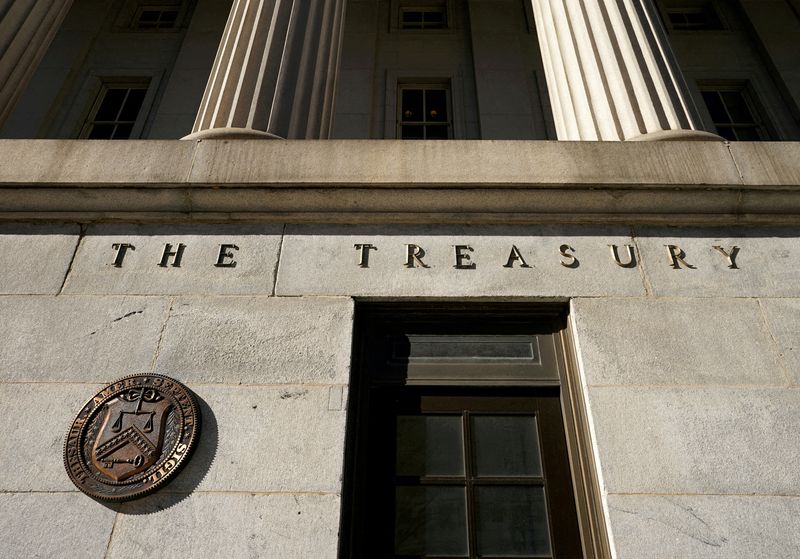Debt buyback program set to improve liquidity, says US Treasury official
2024.06.05 16:46
By Davide Barbuscia
NEW YORK (Reuters) – A recently launched U.S. Treasuries buyback program should improve liquidity in the U.S. government bond market while other initiatives will boost transparency on prices and visibility on the use of leverage, a Treasury official said on Wednesday.
The Treasury launched a buyback program last month to provide market participants a regular opportunity to sell back to Treasury off-the-run securities, which are older and less liquid, across the yield curve. The last time it executed regular buyback operations was in 2000 for about two years.
Buybacks are expected to encourage dealers to make markets for off-the-run securities, “as they will have Treasury as a regular and predictable buyer,” said Assistant Secretary for Financial Markets Joshua Frost in prepared remarks for the ISDA/SIFMA Treasury Forum in New York.
They are also expected to prompt more trading and allow bond dealers to free up balance sheets, he said.
The first buyback took place last week and while Treasury expects to hold weekly purchases, with caps that in coming months will go up to $30 billion per quarter, the outcome of the operations will depend on prices, said Frost.
“Let me be clear: Treasury aims to be a price sensitive buyer. We may buy back less than the stated maximum, or nothing at all, in any operation depending upon the quality of offers that we receive,” he said.
Buybacks are part of a slate of initiatives launched by the Treasury and other institutions to improve liquidity and avoid trading disruptions in the world’s biggest bond market, the bedrock of the global financial system.
In December, the U.S. Securities and Exchange Commission adopted a key reform to boost the use of central clearing for U.S. Treasuries which will apply to the cash Treasury and repo markets, where banks and funds trade loans backed by Treasuries.
Earlier this year the Financial Industry Regulatory Authority (FINRA) began publishing data on certain individual Treasury securities transactions at the end of each day.

More recently, the Treasury’s Office of Financial Research (OFR) said it will soon start to collect data on transactions in the non-centrally cleared bilateral repo market, an opaque corner of Wall Street largely used by hedge funds to finance their trades.
“This market represents one of the largest remaining data gaps for the official sector on Treasury market activity,” said Frost. “Filling this gap will provide data on dealers’ counterparties and the terms of the trades, which should help the official sector to better assess the vulnerabilities in this market,” he said.








